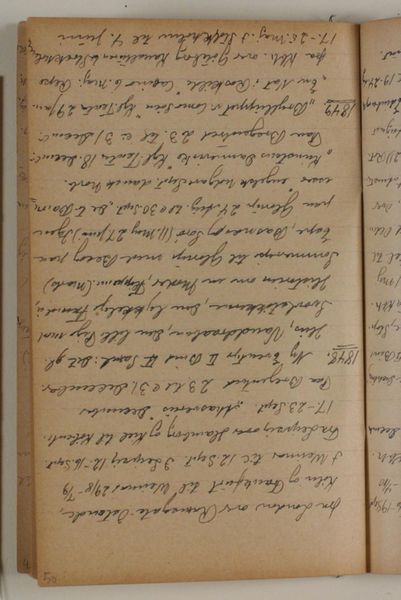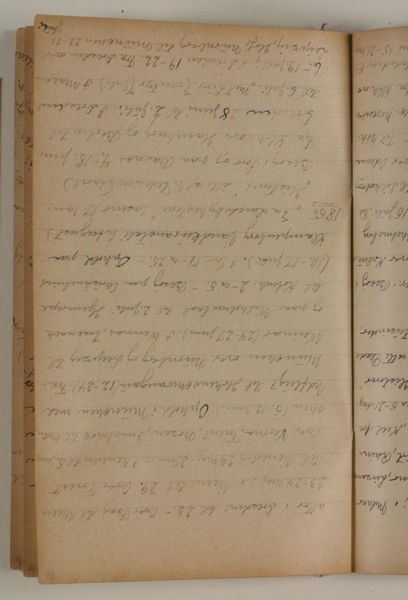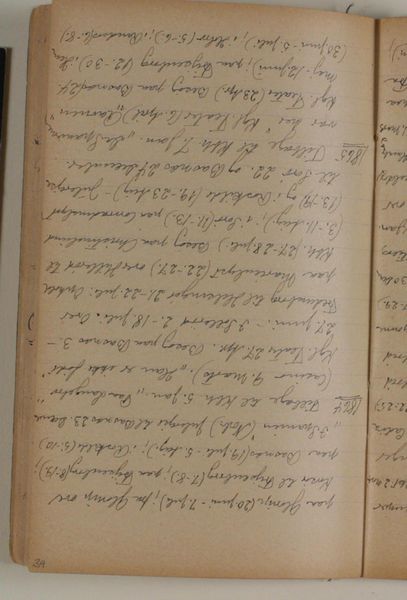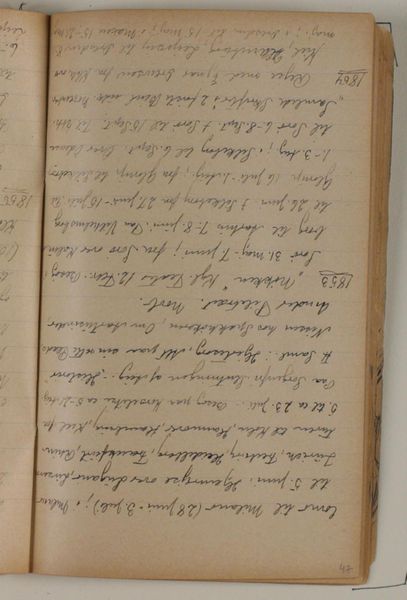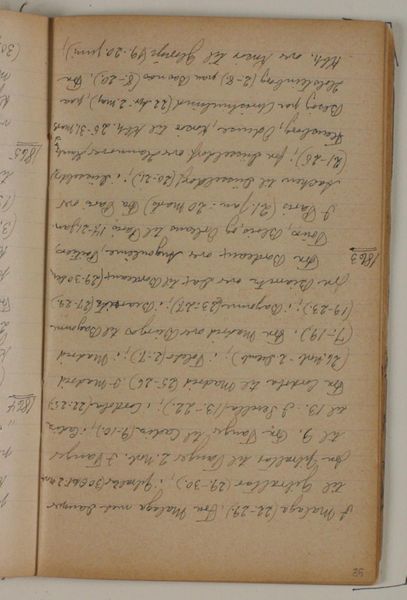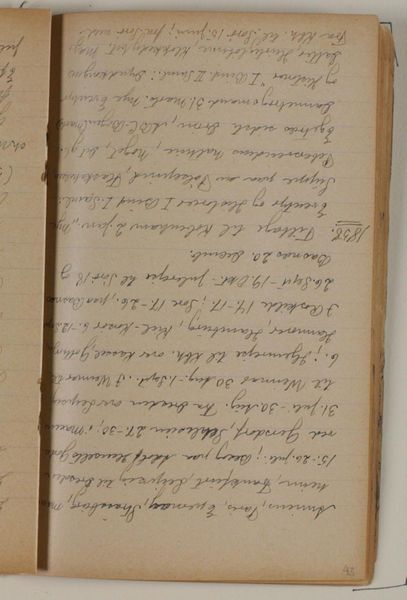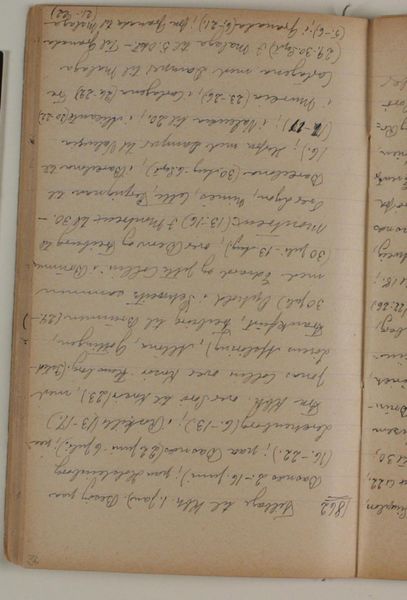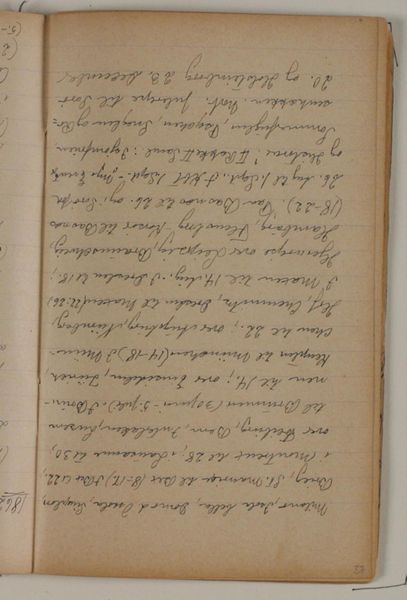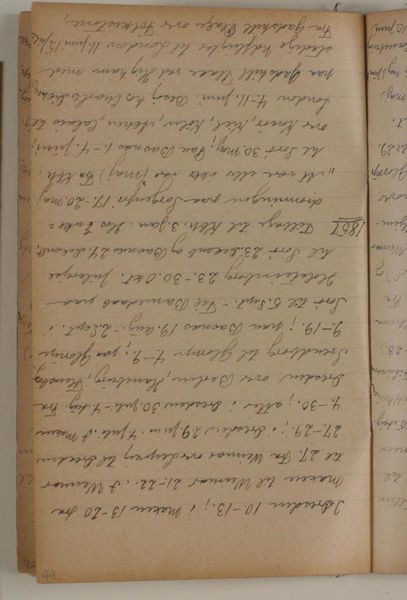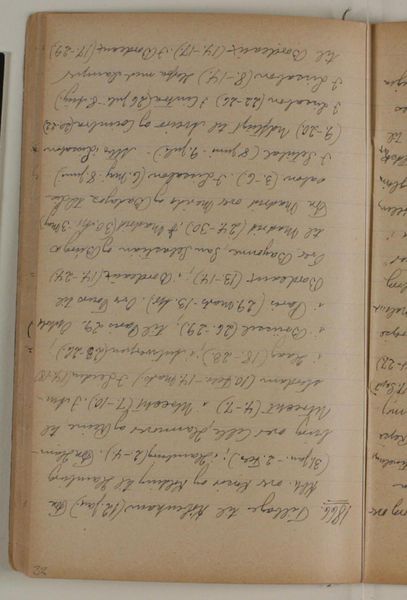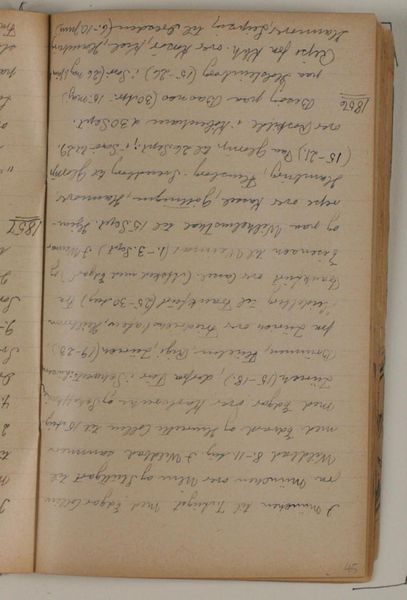
Afskrift på tysk efter Richard Engelmann "Bilder antiken Lebens Pompei" 1864 - 1941
0:00
0:00
drawing, mixed-media, paper, ink, graphite
#
drawing
#
mixed-media
#
medieval
#
paper
#
ink
#
coloured pencil
#
graphite
#
historical font
Curator: This is "Afskrift på tysk efter Richard Engelmann "Bilder antiken Lebens Pompei"", or "Copy in German after Richard Engelmann 'Pictures of Ancient Life Pompeii'", a mixed-media drawing on paper created by Niels Larsen Stevns between 1864 and 1941. What's your immediate impression? Editor: It feels intensely private, almost secretive. Just the close-up shot of open notebook pages covered in dense German script gives it this incredibly intimate aura. I am immediately curious about the artist’s process, sitting there meticulously copying. Curator: Indeed. Let's consider the context. This isn't simply an artistic creation; it’s a copy. What was Stevns’ relationship to Richard Engelmann’s work and Pompeii itself? We need to think about the act of transcription here, the labour involved, and the consumption of classical knowledge. Editor: Absolutely, and to think of all the iterations already: the initial experience of Pompeii, then Engelmann interpreting that, then Stevns taking Engelmann. It makes me ponder artistic labor differently, beyond the myth of pure originality and invention. Almost like a chain of whispers, or even a game of 'telephone'! Curator: Yes, and the medium plays a key role here. He employs drawing materials – graphite, ink, and coloured pencil –to create this “copy.” He imbues his rendition with layers that speaks to both artistic reinterpretation, historical, literary and artistic allusions to a culture in vogue at that historical moment. How does Stevns alter Engelmann's original to suit his aesthetic? Editor: That layering you're speaking about is fascinating... Like each pass brings us further *into* something, versus further away, that, instead of erasing the source, you become further in collaboration. I am moved! Curator: Agreed. Stevns clearly saw something vital in Engelmann's work, worthy of careful transcription, engaging in a dialog across time and media. And in doing so, we also can find layers of artistic meaning and intentionality embedded throughout this singular work on display today! Editor: Ultimately, I'm struck by how seemingly straightforward acts can, in truth, yield layers upon layers of complexity and collaboration. Food for thought.
Comments
No comments
Be the first to comment and join the conversation on the ultimate creative platform.
